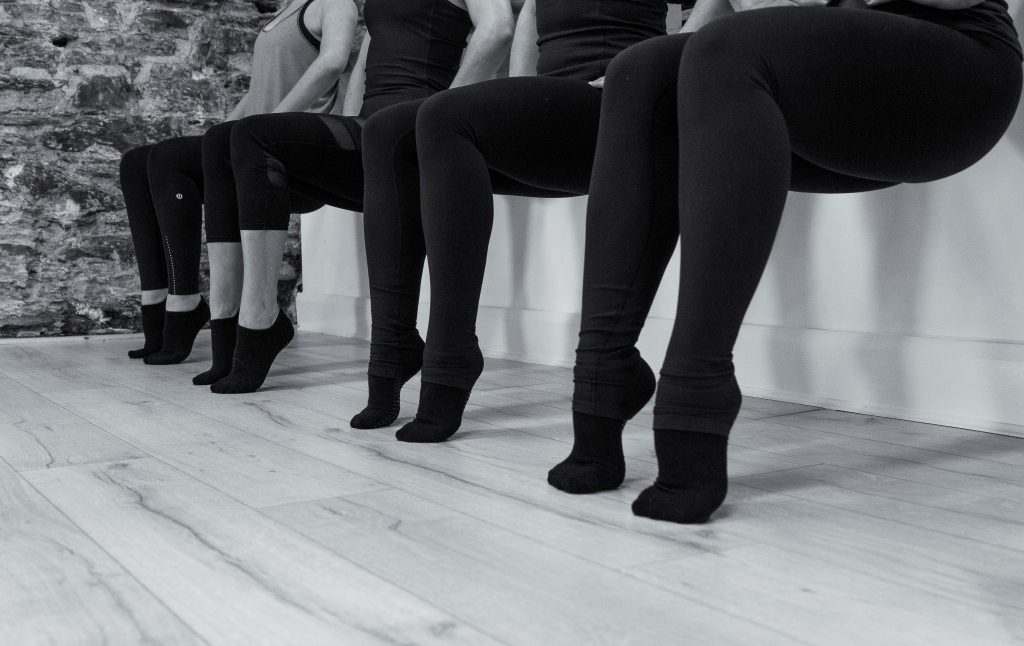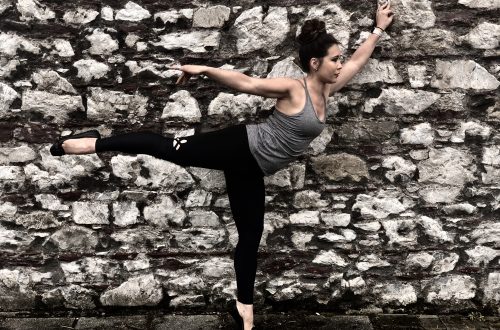In recent conversation with a friend (after barre – OBVIously), we were talking about upcoming weekend events, which led us to lament those days when life gets in the way of “barre time.” Now in this case, she was looking forward to some special occasions and fun things which of course she was more excited about than if it were extra hours at the office, but nonetheless we both agreed that missing a chance to shake at the barre was never something we dealt with well. Although we realized with a laugh that this is probably not something everyone would understand, we completely agreed – life is better at the barre. Even on days which are packed too full to fit everything in, I know (and my husband knows and supports) that barre is a top priority. More than just getting a workout in, the mental clarity and boost to my happiness after “LTB-ing” (lifting, toning, and burning) is well worth even some inconvenience or extra effort to make it to a studio if at all possible. As my friend said, she knows that exercise makes us happier, but there is still something a little different about barre specifically.
I have said for years now that barre is “my happy place;” and it really is. Consistently, research across various disciplines has illustrated the positive effect of exercise on our body, both physically and mentally, many demonstrating that exercise makes us happier. In fact, one study I read recently found that “exercise appears to be the most effective mood-regulating behavior… probably because its primary mood effect is enhanced energy, but a secondary effect is reduced tension.” Throughout their research, psychologists Thayer, Newman, and McClain, have argued that mood is closely associated with differing states of bodily arousal including most significantly, energy (vs. tiredness) and tension (vs. calmness). Their conjecture is that any attempts to self-regulate mood include activities and behaviors which “modulate energy and tension to optimal levels” and they conducted a series of studies to determine what types of activities subjects turned to in an attempt to lift a bad mood, to increase their energy or to reduce stress and tension. There were several different categories and some significant variations based upon gender, age, level of education, occupation, self-reported weight, and personality types, but the end conclusion across their research was that exercise was the most successful of all techniques that participants employed; actually changing their mood for the better.
Further support for the effectiveness of exercise on our subjective wellbeing was provided by the Standard Medical Intervention and Long-term Exercise (SMILE) study which showed that in both men and women who were clinically depressed, those that exercised for 45-minutes, three times per week at moderate to high-intensity showed as significant reductions in their depression as those who were treated with Zoloft or even a combination of Zoloft and exercise. The researchers concluded that aerobic exercise contributed to less dysfunctional attitudes like anxiety and stress,increased happiness and improved self-esteem and confidence while being less expensive and without the negative side-effects of anti-depressant medication. Furthermore, six months later, these patients were less likely to relapse than those were in the medicated group.

Many people have heard that exercise boosts serotonin, dopamine and other feel good hormones, providing a physiological basis for these positive effects, but there are actually many other practical reasons that exercise makes us happier. In The How of Happiness, Sonja Lyubomirsky says that physical activity is particularly effective over many other happiness boosting activities because it provides both acute, immediate impact from one particular workout session in addition to chronic improvements from ongoing exercise. She distills some of the most crucial ways in which this happens according to the research:
Exercise Makes Us Happier by Bolstering Self-Esteem and Mastery
Lyubomirsky says, that exercising makes “you feel in control of your body and your health. Seeing yourself get better at something – faster, farther, stronger – provides a terrific sense of agency and self-worth.” This has definitely been my experience with barre. With some consistency, it doesn’t take long to start seeing a difference in your body in terms of shape, tone and definition which is exciting and motivating in and of itself. But even better is when you start recognizing that actually your heels are higher than they have ever been, your thighs have become much stronger, and you can get through all of weight work without dropping your arms. The realization that you are improving and becoming that much stronger with time and effort provides such a boost to your sense of accomplishment and confidence. And it’s addicting! As you feel yourself understanding the technique better and deepening the work , it only becomes more challenging and yet, more fun.
Exercise Makes Us Happier by Providing Opportunities for Flow
Flow, or optimal experience, is one of the most fascinating of topics for me in the field of happiness and positive psychology because it is one that has the greatest potential impact for me specifically of all happiness boosting activities based on my own personality and preferences. I wrote about flow in greater detail previously, and Lyubomirsky writes about it at length in The How of Happiness as its own topic and also in relation to exercise in particular. She says that physical activity works to provide a “positive distraction that turns away worries and ruminations. It essentially serves as a time-out from your stressful day, with positive spillover effects for hours afterwards… [reducing] anxiety and [increasing] mood lifting hormones… and high arousal emotions (energy, enthusiasm, and vigor)… that not only make you feel good but distract you from hassles and anxieties.” With the small and precise movements, the focus on proper alignment and the mind-body connection of barre, intense concentration is required. At the barre, you can be totally immersed in what you are doing at that particular time and forget about other things outside of the studio for that hour. Being fully present and caught up in flow are major contributors to happiness and major side effects of barre.
Exercise Makes Us Happier by Providing Opportunities for Social interaction
Lyubomirsky writes that “when performed along with others [exercise] can provide opportunities for social contact, thus potentially bolstering social support and reinforcing friendships. It can even lift the burden of loneliness or isolation”. This certainly rings true for me. I have written many times before about the importance of meaningful social connections in our lives, which makes sense to most of us intuitively. The energy and atmosphere of being in a barre class specifically has always been something which motivates me and I have introduced many friends to barre over the years in addition to making many new one in class and the studio now teaching. When we first moved to Cork, I didn’t know anyone besides my husband and I was working from home, so I didn’t even have the opportunity to befriend work colleagues. Finding the studio provided me with the chance to get out and around like-minded people and to build and become part of the community there now which I so deeply appreciate.
I encourage you to find a workout that works for you based upon your own fitness level, preferences, and resources – the payoff is well worth the effort. And of course, I cannot recommend barre more highly! In case you are wondering what all the buzz is about or want to check it out before you head out to a studio, you can get a mini sweat session in with our new online @flexinthecity online YouTube channel.






3 Comments
Club of “Runners”
I’ve tried a lot of different fitness classes and barre remains my favorite. It’s fun and effective all at the same time! 🙂
mirandarachael
Totally agree! It’s excellent as a cross-training option for nearly anything and I’ve yet to get bored with it 🙂
Pingback: